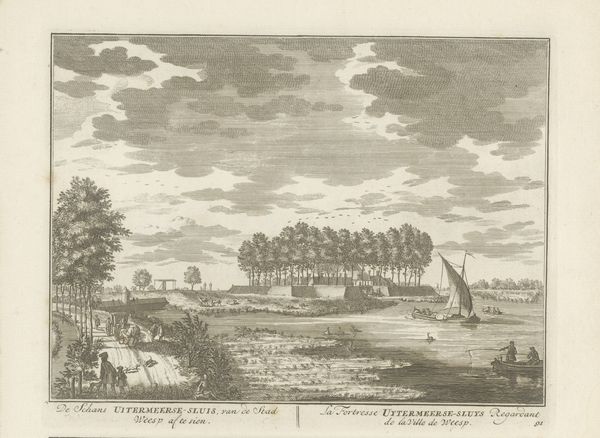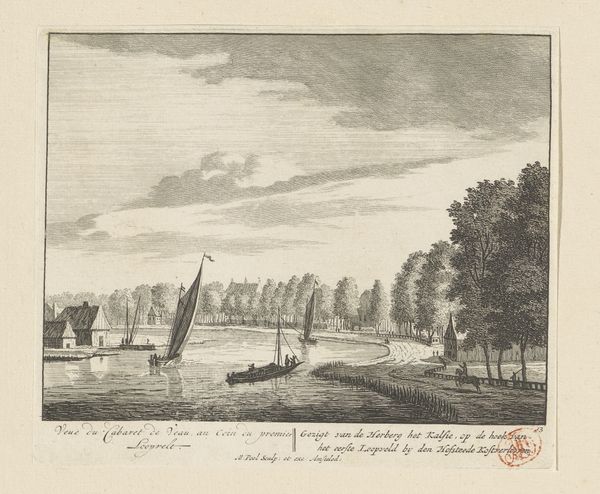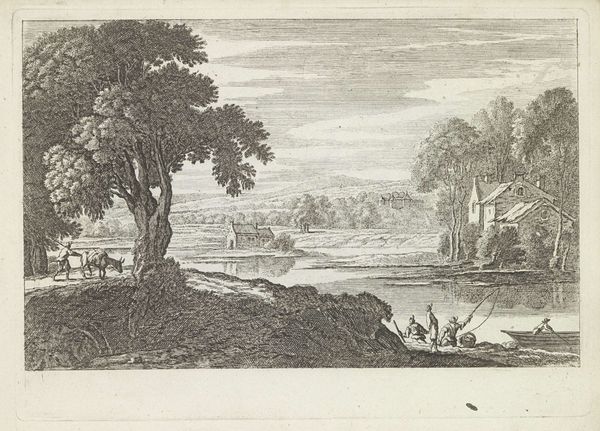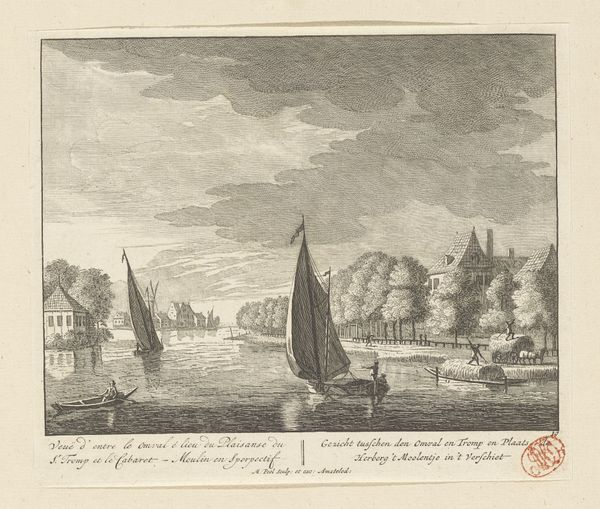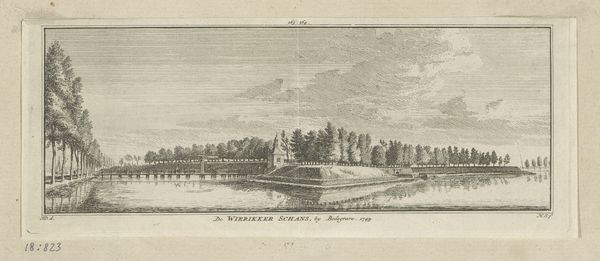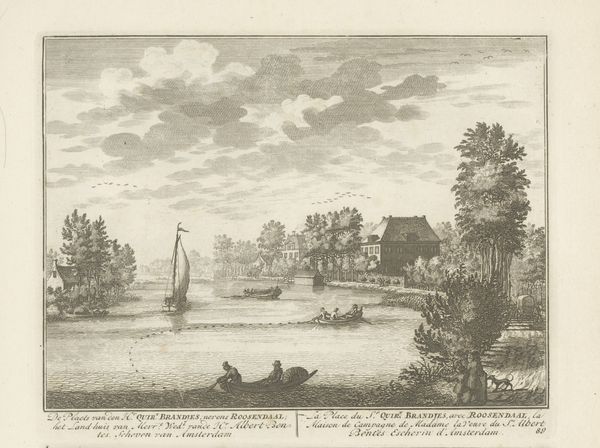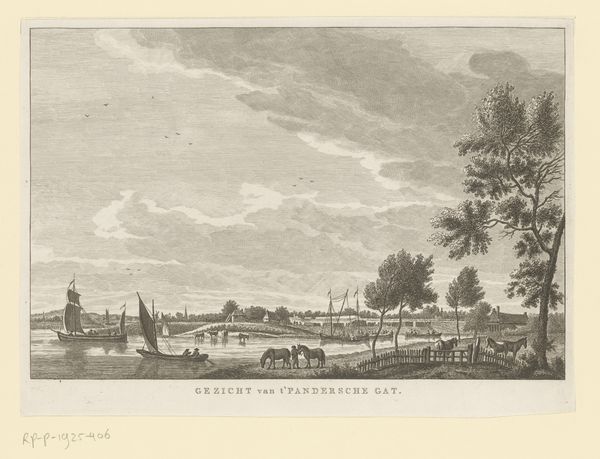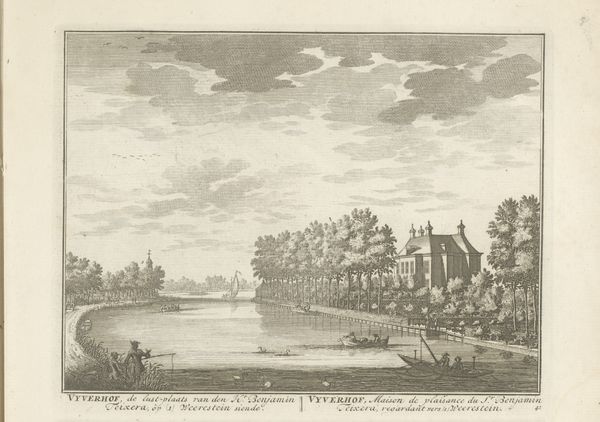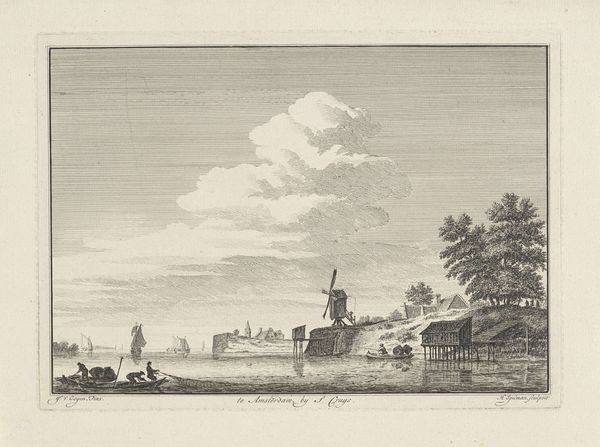
print, engraving
#
dutch-golden-age
# print
#
landscape
#
cityscape
#
engraving
Dimensions: height 83 mm, width 211 mm
Copyright: Rijks Museum: Open Domain
Curator: This engraving, dating from 1750 to 1792, presents a view of Oudshoorn, courtesy of Hendrik Spilman and now residing at the Rijksmuseum. Editor: The first thing that strikes me is the scale and delicacy. The tiny lines create this whole little world in monochrome. Curator: Spilman certainly excelled at manipulating the copper plate. Think about the engraver’s labour: the skill and precision needed to capture the nuances of light and form using only lines and dots. The paper used also matters here – handmade, likely, influencing the ink's absorption. These details underpin the artwork's final presentation and value as a commodity of its time. Editor: Absolutely. And the subject matter—Oudshoorn—a small town situated along the river, gives a snapshot of Dutch society in transition. Consider the social structures represented. The church, a dominant architectural element, signified not just religious authority but social control. A small boat is sailing towards the houses... it hints to social connectivity for trade, commerce, and, possibly, colonialism. Who gets to be represented and how reflects existing hierarchies. Curator: Indeed, look closely at the people depicted: the traveler, the horse-drawn carriage. Their presence emphasizes the daily labor intertwined with travel and economic activity. Engravings like these served a market—sold and circulated, they helped visualize Dutch expansion but also offered new local, rural subjects. Editor: Let’s not forget this landscape is more than just a pretty scene; it's a carefully constructed representation of Dutch identity, imbued with notions of national pride, class, and the era’s social expectations. Curator: Precisely! Viewing art through the lens of its production and social functions reveals so much more than initially meets the eye. Editor: I leave contemplating the power dynamics embedded within what might initially seem a simple view. Curator: For me, understanding the labor and context informs how we might reconsider our perceptions.
Comments
No comments
Be the first to comment and join the conversation on the ultimate creative platform.
